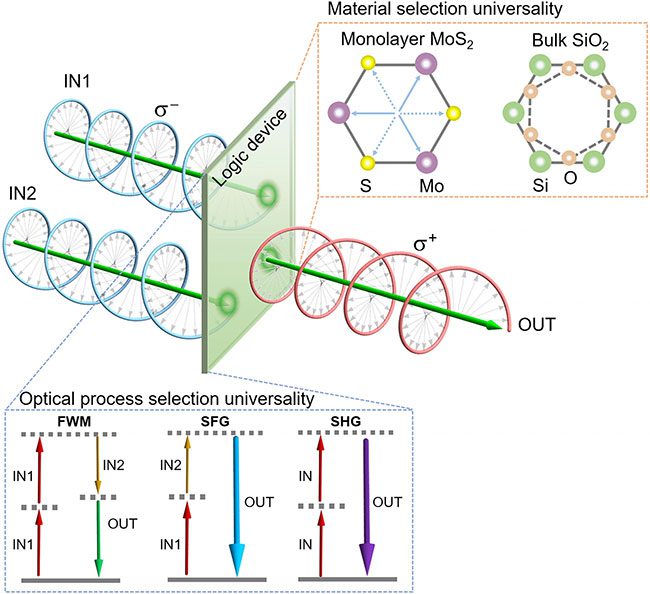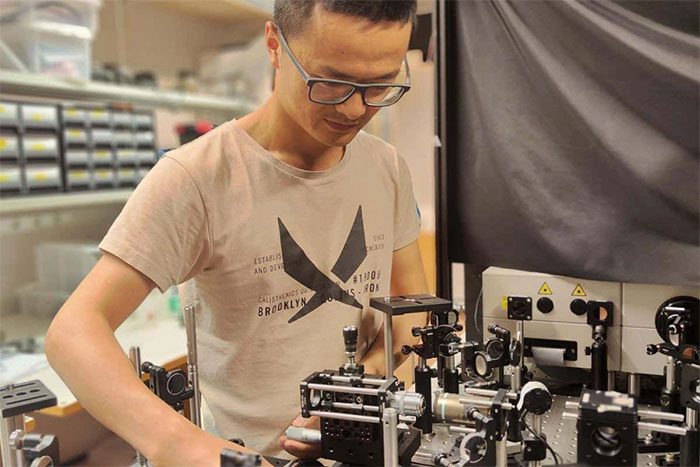Not only do optical chip computers possess superior computational abilities compared to conventional computers, but they can also utilize existing algorithms without the need to rewrite them entirely.
As the processing capabilities of semiconductor chips approach their limits, the demand for processing power is reaching new heights, driven by algorithms for big data processing, artificial intelligence, and 3D graphics. Quantum computers can process information at speeds hundreds of millions of times faster than today’s supercomputers, but they use a completely different computing architecture and may require rewriting all algorithms to harness their power.
However, computer scientists at Aalto University in Finland have discovered a new solution that can overcome this barrier: optical chips with optical logic gates—similar to the logic gates on current semiconductor chips that operate based on electrical current—can deliver processing speeds up to one million times faster than traditional computers today.

Optical chip.
Previously, there have been many designs for optical computers, but they often came with complex hardware and were limited to specific applications. However, the recent research by scientists at Aalto University has created logic gates from a layer of Molybdenum Disulfide with a thickness of just 0.65 nm using current manufacturing technologies. Furthermore, the new chip can also perform common tasks on a small scale.
It is evident that photons of light travel much faster than charged particles, which significantly increases computational speed. Additionally, because light is not affected by resistance, it can complete tasks with much lower energy consumption compared to traditional electrical chips.
The research team’s approach involves using circularly polarized light, where a light wave rotates around its axis of motion in either a clockwise or counterclockwise direction. The rotation direction of the polarized light can be adjusted by the shape of the crystalline material it passes through.

Polarized light can change direction depending on the shape of the crystalline material it passes through—in this case, Molybdenum Disulfide.
For a traditional computer bit, it has 2 states: 0 or 1—representing whether the current flowing through it is negative or positive. This can similarly be represented by the optical chip when polarized light passes through it in a clockwise or counterclockwise direction.
In optical computers, the logic gates are made from the aforementioned crystalline material, which is particularly sensitive to the rotation direction of these polarized light beams. By using optical filters and other components, these logic gates can replicate the corresponding functions found in traditional semiconductor chips.
The research team has demonstrated the operation of optical logic gate prototypes, replicating the functionality of traditional logic gates such as XNOR, NOR, AND, XOR, OR, and NAND—these gates help perform various calculations on the received data. Not only are these calculations faster, but they are also executed in parallel rather than sequentially, as is typically seen, paving the way for significant improvements in energy efficiency and computational speed.

Researcher Yi Zhang from Aalto University.
Yi Zhang, the lead researcher on this study, stated: “We hope that optical computers can be fully realized in the future. The biggest advantage here is the ultra-fast computational speed of optical chips compared to traditional chips. Additionally, light has the capability for parallel processing and consumes less energy, while electronic devices consume more energy due to resistance.“
A key factor in controlling light is optical modulators, which help adjust light density, phase, or polarization. While current optical modulators mainly use electric or acoustic effects to indirectly control light properties, Zhang noted:
“These two traditional optical modulation technologies can control light properties at nanosecond speeds. However, our fully optical modulator, using a seamless optical process, can operate at femtosecond speeds, which is a million times faster than current technology.“
Not stopping there, Zhang mentioned that future research will focus on exploring whether optical logic gates can be used to create hybrid computers that combine quantum and traditional elements or to create quantum optical logic gates. This is due to a commonality between quantum computers and optical chips, as both use photons to transmit data.


















































